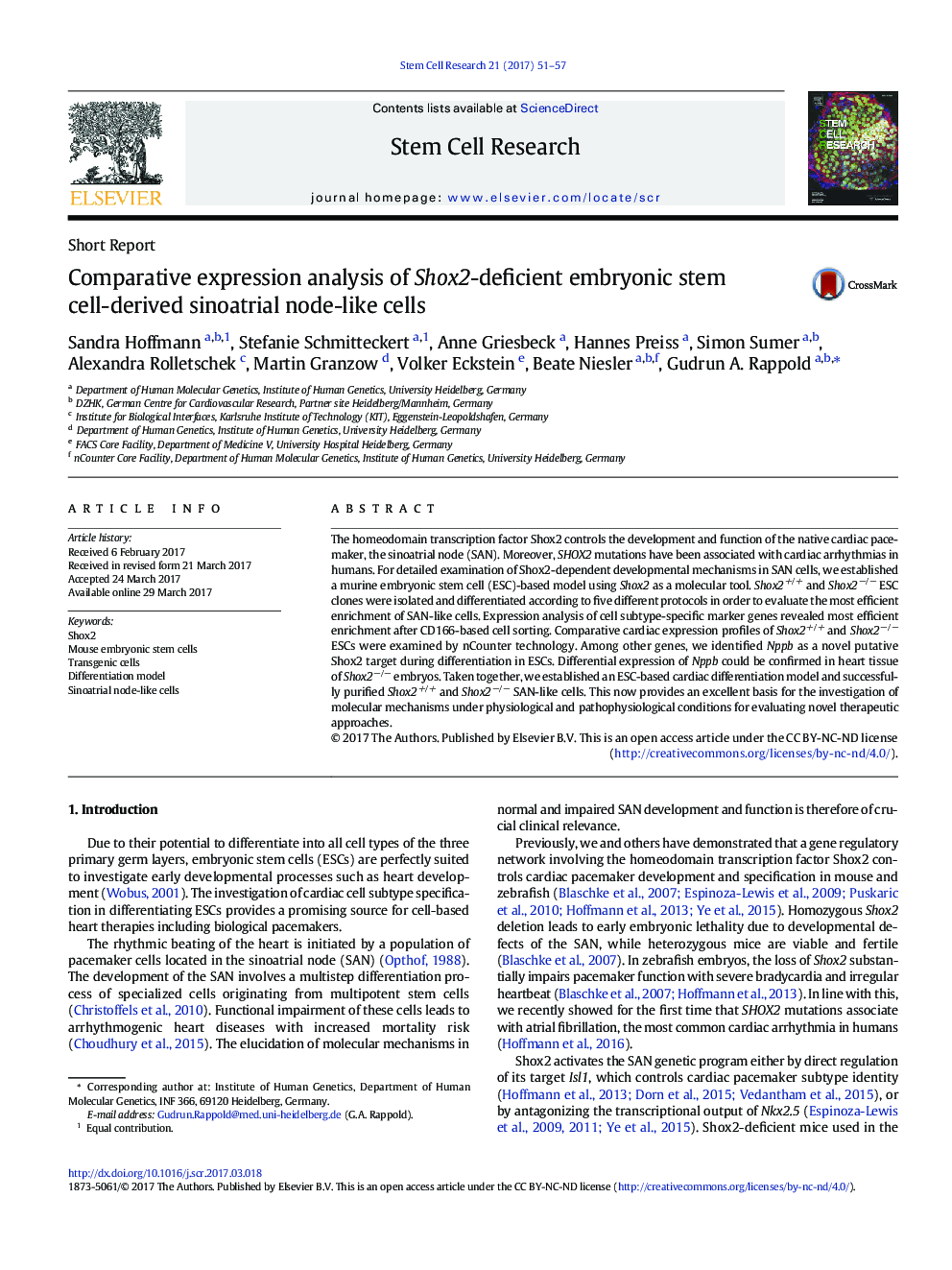| Article ID | Journal | Published Year | Pages | File Type |
|---|---|---|---|---|
| 5522646 | Stem Cell Research | 2017 | 7 Pages |
â¢Generation and characterization of Shox2-deficient ESC lines (Shox2+/+, Shox2â/â).â¢Most efficient enrichment of ESC-derived SAN-like cells by CD166-FACS sorting.â¢Expression analysis confirmed specificity of the ESC cardiac differentiation model.â¢Identification of Nppb (Bnp) as a novel putative Shox2 target gene.
The homeodomain transcription factor Shox2 controls the development and function of the native cardiac pacemaker, the sinoatrial node (SAN). Moreover, SHOX2 mutations have been associated with cardiac arrhythmias in humans. For detailed examination of Shox2-dependent developmental mechanisms in SAN cells, we established a murine embryonic stem cell (ESC)-based model using Shox2 as a molecular tool. Shox2+/+ and Shox2â/â ESC clones were isolated and differentiated according to five different protocols in order to evaluate the most efficient enrichment of SAN-like cells. Expression analysis of cell subtype-specific marker genes revealed most efficient enrichment after CD166-based cell sorting. Comparative cardiac expression profiles of Shox2+/+ and Shox2â/â ESCs were examined by nCounter technology. Among other genes, we identified Nppb as a novel putative Shox2 target during differentiation in ESCs. Differential expression of Nppb could be confirmed in heart tissue of Shox2â/â embryos. Taken together, we established an ESC-based cardiac differentiation model and successfully purified Shox2+/+ and Shox2â/â SAN-like cells. This now provides an excellent basis for the investigation of molecular mechanisms under physiological and pathophysiological conditions for evaluating novel therapeutic approaches.
